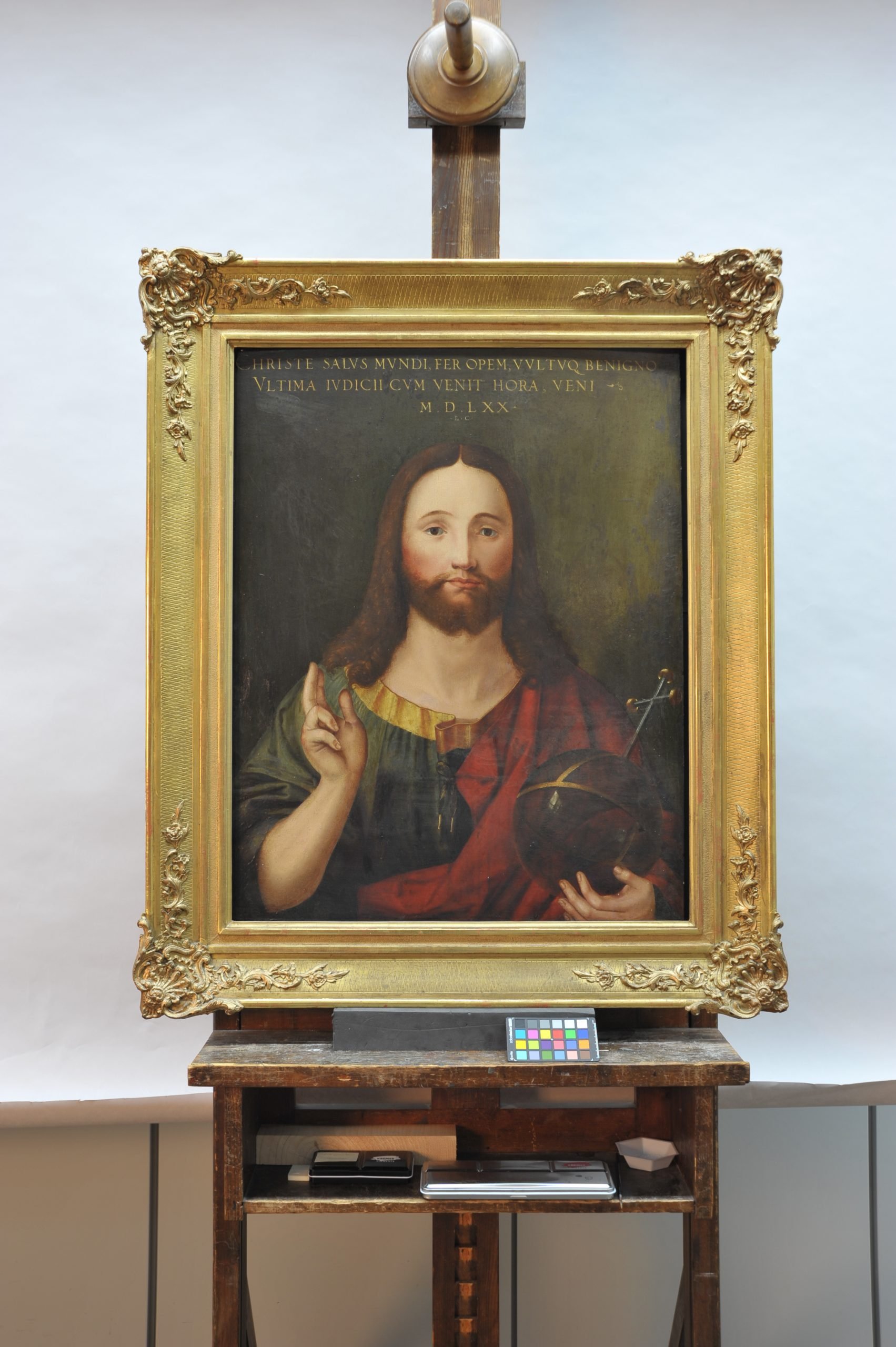
A painting of Christ belonging to the church of St. Salvator in the quaint Bavarian town of Bettbrunn—population 261—may be the work of German Renaissance artist Lucas Cranach the Younger.
The attribution is straightforward: in the painting’s upper portion and directly beneath the year 1570, written out in Roman numerals, are the letters “L.C”. This marking, first noted by art historian Friedrich Fuchs in 2002, made the painting something of a town secret, one that was covered in local papers and accessible to anyone who knew to ask the chaplain for a viewing.
Despite sporadic visits by art experts to St. Salvator over the past two decades, the painting’s provenance has never been determined. This might be about to change with restorers from the Bavarian State Department of Monuments and Sites (BLFD) set to begin investigating its authenticity.
Researchers are using infrared to see preliminary drawings. Photo: courtesy Blfd.
The development has arrived with Bettbrunn’s new parish chaplain, Peter Stier, who hopes to make the painting more accessible to the public by placing it in St. Salvator’s little chapel. Before doing so, Stier contacted BLFD to make sure the new environment wouldn’t damage the 16th-century painting that depicts Jesus as Salvator Mundi, the savior of the world, as symbolized by the orb he holds in his left hand.
“This might be a widely unknown work of Lucas Cranach the Younger and we agreed on an extended scientific research before deciding on further conservation treatment,” Julia Brandt, a restorer in the paintings department at BLFD, told Artnet News.
Bettbrunn might be a small town in the Bavarian countryside, but it has been an important pilgrimage church for hundreds of years, which increases the possibility that it was donated by someone both pious and affluent, something Brandt says there’s evidence of.
The painting under UV light. Image: courtesy Blfd.
Cranach the Younger, who was born in in 1515 Wittenberg, where he lived and worked for most of his life, and studied painting under his father before taking over the family workshop from 1550. He was known for his religious scenes, as well as his portraits of German nobles and Protestant Reformers, including Martin Luther.
The Bavarian team will use technologies including U.V., X-ray, and infrared examinations to investigate aspects of the painting at St Salvator such as underdrawings, pigments, and the wood used. Luckily, a large-scale project that collected data on 600 paintings by Cranach the Elder, his sons and his workshop was recently completed. This means there is a large repository of attributed paintings against which to compare the Bettbrunn work.
The Cranach signature was a snake with bat wings, which was awarded to Cranach the Elder by Elector Frederick the Wise in 1508. Photo: David Ebener/picture alliance via Getty Images.
One sure giveaway Brandt hopes to find? The winged serpent, the coat of arms that was granted to Cranach the Elder in 1508, and was signed onto paintings as a certificate of authenticity by the family.
“The painting has a lot of retouches and overpaintings,” Brandt said. “If we’re really lucky, we’ll find the serpent.”
More Trending Stories: